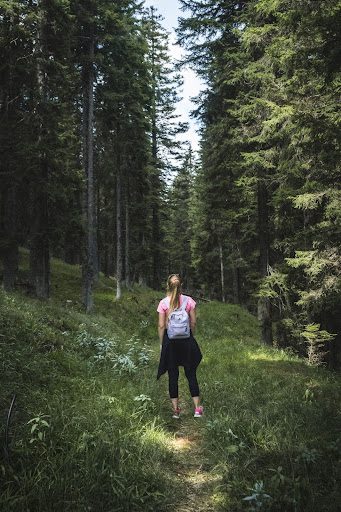There’s a simple question we get all the time at Tall Pines, “What’s my timber worth, and how much can I sell the wood for?” We can’t do much to assess the value of trees we’ve never seen, and, unfortunately, even when you know your land pretty well, it’s not a simple question to answer accurately.
Not only is it challenging to assess the exact volume of timber you have on your land and how much of that can (or should) be harvested, but the costs of harvesting the timber, the price the market will pay, the logistics of getting the timber to a buyer, and so on are all complications that make simple answers either impossible or misleading.
Of course, you can contract us to do an in-depth analysis, forest management plan, and sales projections for your timberland, but that’s often more elaborate and cumbersome than people want for a simple answer to what seems like a simple question. In this blog, we will explore what goes into estimating the value of timber and how you can get a rough idea of the value of your own timber.
What Factors Affect Timber Value?
Many factors affect timber prices, and in the end, the price you get for your wood will be affected by all of them. In simple terms, you have the initial value of your timber per tree, the number of trees, how many of those you can or want to actually harvest, and then the costs of harvesting, transporting, and finding a buyer for the timber. At Tall Pines, we partner with logging companies that can help manage all the marketing and transportation, bringing down your costs by limiting the number of parties seeking to profit from the sale of your timber. That said, all these factors matter. Let’s take a closer look at these factors and why and how they matter.
How Many Trees You Have and How Big They Are
Obviously, the amount of usable wood you get from your land is the most important factor in determining its value. This is actually a little complicated because having a tree and being able to reasonably harvest it isn’t necessarily the same thing. Let’s start with the basics and estimate your potential timber first.
First, only the trees mature trees should be counted, what this means varies by tree species. For some maturity is as small as a 7” diameter, for others it’s over 20” so do your research on the species you have. There will be some juvenile trees cut as well, usually because they’re malformed, but these immature trees yield very little income, if any.
We suggest taking an average count for these mature trees in an area that represents the area of land you’ll be harvesting. The larger the sample, the more accurate, but if you can count out the trees in at least one percent of your total land, you should have a relatively accurate number to work with.
For example, if you’re harvesting 100 acres, try to get a count of mature trees on one acre (that’s 43,560 square feet or an area that’s about 208 feet by 208 feet, here are some visual comparisons to give you a better idea of how big this is). You then multiply this 1% number by 100. So, if you had 100 mature trees on your one counted acre and were going to harvest another 99 acres, you’d have 10,000 trees to harvest.
Mature trees being counted here will yield a number of board feet that varies depending on species and size, you can find a breakdown of how to determine this quantity here. to simplify, we’ll assume about 125 board feet per tree (or trees with an average diameter of at least 12” and a height of at least 75’). So, you’d have a maximum theoretical harvest of about 1,250,000 board feet of timber to sell in our example.
What Types of Trees Are There?
This one matters a lot. Some species are good for nothing but pulp or chips. Others are great for high-end wood products like veneer, saw timber, and dimensional lumber. One of these is worth far more than the other. If you take a look at current pricing, you’ll see just what a range there is from one application to another, even within the same market. So, while you’re counting your mature trees, take the time to note how many of each species you have. While not all trees of a given species will be of the same quality, you can get a sense of the value based on the spread of the species and what they’re most often used for.
How Hard Are Your Trees to Harvest and Transport?
This factor is a little more abstract to consider than the raw number of trees, but it makes sense if you think about it. Not all trees are going to be convenient to harvest. Whether very rough or wet terrain makes reaching the trees hard, it’s not always worth harvesting them. If you’ve had your land harvested before, you might actually have a good sense of what areas are too hard to harvest and which are easier.
Another factor contributing to less than total tree harvesting is that unless you’re performing a true clearcut, you will want to leave seed trees that are fully mature and genetically ideal for regenerating your timberland. To be safe, assume that about 10% of the trees you could harvest won’t make sense to harvest.
Current Market Rates For Timber
This one should be obvious, but your timber is ultimately worth what someone will pay for it. Understanding what the market will pay for your timber requires a look at your region’s current timber pricing. This can be a little tricky because these prices change and harvesting takes time. Further, reporting on prices isn’t always updated with the regularity you might want. In Maine, stumpage pricing reports usually come out a year or two after the fact. Other pricing standards are updated more often but are less official and reliable.
Costs and Taxes
While this doesn’t technically affect the value of your timber, if you’re asking what your timber is worth, you’re usually really asking how much profit you can make from a timber harvest. So it’s important to understand the costs that limit your profits. First, you’ll need to pay for the harvest and transportation of the timber. Usually, your logging company or managing forester takes this out of the sale price. While it varies by the species, wood quality, the distance it needs to be transported, and so on, the typical figure is 40% to 50% of the sale price of the timber will go towards harvesting costs.
Second, keep in mind the taxes on your harvested timber income can be substantial. Generally, it counts as either normal income or as capital gains, depending on factors better addressed elsewhere. Historically, this can be anywhere from 15% to 37% of your profit. Having an accountant with an understanding of how to optimize timber harvest income is recommended to help you to retain more of your profits
Timber Appraisals From Tall Pines Forest Management
To better understand the value of your timber and ensure you’re getting the most for your trees, get in touch with Tall Pines Forest Management today. We have both the best tools for modeling forest density, health, and value and the experience to get you the best yields and prices on your next harvest in Maine or New Hampshire.


0 Comments